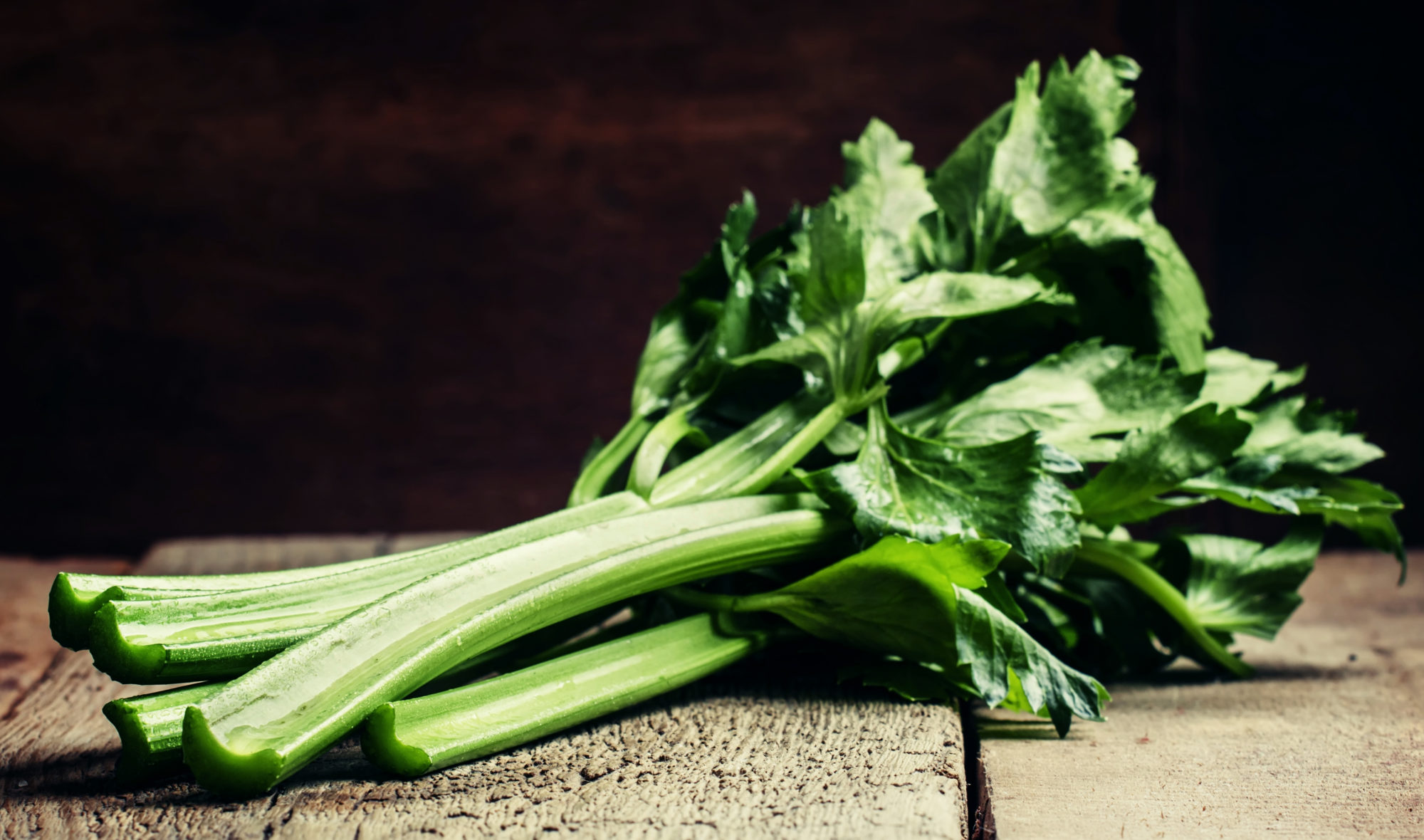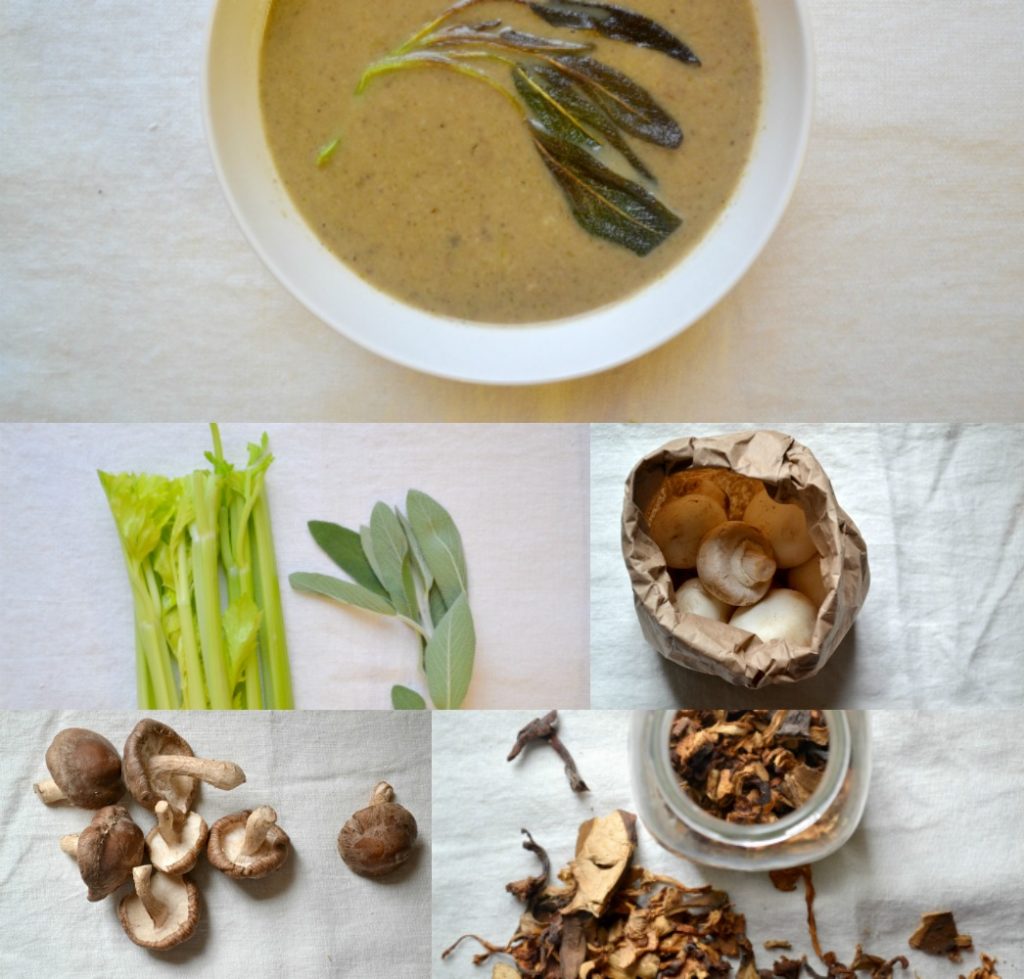Celery


If celery is known for anything, it’s crunch. In addition, celery is also known for its frequent appearances on crudité platters and in savory cocktails. Celery is also a component of “mirepoix”, a versatile vegetable-based flavor starter for soups, stocks, and sauces. Contrary to popular belief, eating celery does not create a calorie deficit. Although it is low in calories, the energy it takes to eat celery does not exceed the energy contained in celery. More important than caloric content, this watery, slightly bitter vegetable is nutritious, and it is exceptionally rich in fiber and vitamin K. Perhaps the most important feature of celery is it’s curved, canoe-like shape, which is a perfect vehicle for storing delicious dips and fillings, as they make their way to your mouth.
If there is one thing that stands out about celery, it’s that it is exceptionally crunchy.
In fact, celery is so crunchy that it is a favorite prop used by Hollywood sound effect designers to create the sound of breaking bones. Yes, celery, which is among the most inoffensive and unassuming vegetables, is used to create the gruesome, layered, splitting sound of bones being crushed and splintered. Ouch.
Less cringe-worthy, are celery’s culinary applications: It is an excellent vehicle for dips and is therefore a common guest on crudité platters, and it is an essential ingredient in “mirepoix”, a combination of sautéed onions, carrots, and celery that serves as a versatile flavor base for soups, stocks, and sauces. It can also be seen poking out of certain savory cocktails.
Celery is also a popular “diet food”, and many incorrectly believe that the metabolic effort required to consume celery exceeds its calorie content, making it a “negative calorie food”. Although this isn’t true, celery is, by volume, a very low calorie food.
Celery is thought to have originated thousands of years ago in Europe and the Mediterranean region, and there is evidence of celery being used as a medicinal plant in Ancient Egypt.
Celery is a cool season crop and today, most celery sold in North America comes from California.
Although there are many varieties of celery, the most common cultivar is the “Pascal” variety.
As a bunch, celery appears as a vertical arrangement of stalks that fuse together on one end, and finish in leafy projections on the other end. Each stalk is stiff and curved, forming a canoe-like shape. In color, celery is a vibrant green which pales in color toward the inner stalks.
Celery is exceptionally crunchy with tough, string-like fibers running along the length of each stalk. The flavor is watery and slightly bitter, especially in the outer, darker portions of the bunch. The inner portion of the bunch tends to be paler, sweeter, and more tender.
One cup of chopped, raw celery (about 101g) has 16 calories, 0.7g protein,0.2g of fat, 3g of carbohydrates, 1.6g fiber, and 1.4g sugar. Celery is a good source of vitamin K.
Celery is widely available at most grocery stores and fruit and vegetable markets.
When choosing celery, look for compact bunches that have stiff stalks with pale or bright green leaves. Avoid celery whose stalks are splayed out and bendy, or whose leaves are yellowed or spotted. The bottom end of the bunch should look white and clean; check here for signs of mold and if detected, pass these bunches over.
Celery can be stored in the fridge, either wrapped tightly in a plastic bag, or, in order to maintain maximum crunchiness, using this method: Slice off the bottom inch of the celery bunch, and submerge this sliced end into a bowl or mug of water and place in the fridge. This method may also be used as a way of reviving slightly tired or wilted celery. Using either the wrapped bag or the submerged-in-water method will keep celery fresh in the fridge for five to seven days.
It is not recommended that raw celery be frozen, as the texture will change drastically when thawed. If you want to freeze celery, cook it first, and then keep frozen for up to six months in an airtight container.
Celery need only be washed and sliced before eating.
To do this, it is easiest first to chop off the bottom inch of the bunch, and also the top inch if it shows any signs of browning or dryness. Separate the stalks and wash them one by one under cool water, loosening any dirt (which will collect primarily at the bottom) with your fingers. Once they are clean, cut the stalks in desired shapes and eat plain, or dipped into something yummy, or chopped fine into salads, soups, or other cooked dishes.

This creamy, luxurious soup is full of flavor - and it’s dairy free and vegan! Topped with crispy sage, this makes and elegant, yet simple side dish.
Prep Time: 10 minutes Cook Time: 60 minutes Yield: 6-8 bowls
Begin by placing the dried mushrooms in a jar, and pouring a cup of boiling water over them to begin the soaking process. Set aside.
Next, in a large pot over medium heat, add olive oil, onions, garlic, and celery, and cook until soft and fragrant, about 10 minutes. Add nutmeg, sage, salt, white button mushrooms, and shiitake mushrooms, and sauté with the celery mixture. Cook until mushrooms are soft, about 10 minutes.
Add soaked mushrooms, including the soaking water, broth, coconut milk, and apple cider vinegar. Stir and cover the pot; reduce the heat and allow to simmer for about 20-30 minutes.
Once simmering time is up, use an immersion blender, or transfer soup in batches to a food processor or blender to process until smooth.
To prepare crispy sage leaves, heat a bit of olive oil over medium high heat in a small pan, and once oil is popping, place sage leaves in the oil. Fry on one side, about 30 seconds, and then flip and fry the other side until crispy.
Portion soup into individual bowls, and then top with crispy sage. Finish with a few cranks of freshly ground pepper, and serve.
Precision Nutrition’s Encyclopedia of Food expands every single month as we highlight new foods and showcase beautiful food photography. If you’d like to stay up to date, simply click this link. From there, we’ll send you a FREE copy of our recipe book. We’ll also let you know when new and delicious foods are added to the site.
If celery is known for anything, it’s crunch. In addition, celery is also known for its frequent appearances on crudité platters and in savory cocktails. Celery is also a component of “mirepoix”, a versatile vegetable-based flavor starter for soups, stocks, and sauces. Contrary to popular belief, eating celery does not create a calorie deficit. Although it is low in calories, the energy it takes to eat celery does not exceed the energy contained in celery. More important than caloric content, this watery, slightly bitter vegetable is nutritious, and it is exceptionally rich in fiber and vitamin K. Perhaps the most important feature of celery is it’s curved, canoe-like shape, which is a perfect vehicle for storing delicious dips and fillings, as they make their way to your mouth.